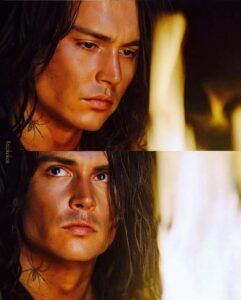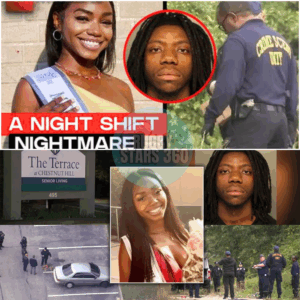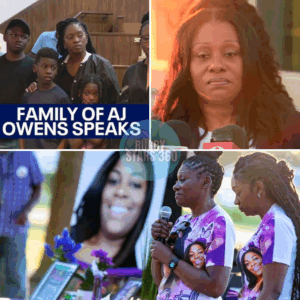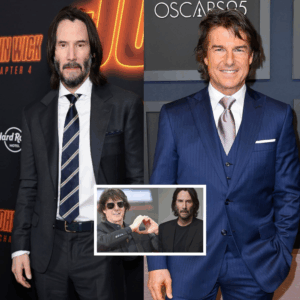In the kaleidoscope of Johnny Depp’s eclectic career, few projects stand out as boldly—or as tragically—as The Brave, his 1997 directorial debut. This neo-Western drama, adapted from Gregory McDonald’s novel Rafael, Last Days, is a haunting exploration of sacrifice, poverty, and the human spirit. Yet, it’s also a project that left Depp $2 million in debt, a financial wound that underscores the risks of passion-driven filmmaking. Despite its polarizing reception and limited release, The Brave remains a compelling chapter in Depp’s legacy, a film that challenges audiences to confront uncomfortable truths about desperation and redemption. Why did this project, helmed by one of Hollywood’s brightest stars, become such a costly endeavor, and what makes it resonate with audiences even today?
The Brave tells the story of Raphael, a Native American man living in a squalid trailer park near a junkyard with his wife, Rita, and their two children. Struggling with alcoholism and poverty, Raphael sees no way out of his family’s dire circumstances. When a mysterious producer, McCarthy (played by Marlon Brando), offers him $50,000 to star in a snuff film—a movie in which he will be tortured and killed—Raphael accepts, believing the money will secure a better future for his family. The film follows his final week, as he grapples with his decision, showers his family with gifts, and faces the looming specter of his own death. It’s a slow, meditative narrative, heavy with philosophical undertones and unflinching in its portrayal of marginalized lives.
Depp’s involvement in The Brave was deeply personal. He not only directed the film but also co-wrote the screenplay with his brother, D.P. Depp, and starred as Raphael. The project was a labor of love, born from Depp’s desire to tell a story about sacrifice and the plight of Native Americans. He was drawn to the script’s raw emotional core, which resonated with his own values of family and redemption. To ensure the film’s completion, Depp insisted on creative control, a rare privilege for a first-time director. This control, however, came at a steep price. With an estimated production budget of $5 million, Depp agreed to cover any cost overruns, a decision that led to him reportedly investing up to $2 million of his own money when expenses ballooned.

The financial gamble was only part of the story. The Brave faced a rocky road from its inception. Initially optioned by Acappella Pictures, a small production company founded by Charles Evans Jr. and Carroll Kemp, the project gained traction in 1993 due to its provocative premise. However, tragedy struck when Aziz Ghazal, the original director, became embroiled in a personal scandal, halting his involvement. Depp stepped in, rewriting the script and taking the helm. His star power, bolstered by recent successes like Don Juan DeMarco and Ed Wood, attracted international distributors at the 1995 Cannes Film Festival, where the project was auctioned off. Yet, the film’s dark subject matter and unconventional pacing made it a hard sell, particularly in the United States.
When The Brave premiered at the 1997 Cannes Film Festival, it was met with scathing reviews from American critics. Variety called it “turgid and unbelievable,” while Screen International labeled it “narratively inept and dramatically empty.” Critics lambasted its slow pace, lengthy runtime (over two hours), and what some perceived as self-indulgent cinematography, with the camera lingering on Depp’s physicality. The negative feedback stung Depp, who had poured his heart into the project. In response, he made a bold decision: he refused to release The Brave in the United States, either theatrically or on home media. The film saw limited releases in France and other international markets, but in the U.S., it became a cinematic ghost, accessible only through bootleg tapes or imported DVDs.
The decision to withhold The Brave from American audiences was both a statement and a sacrifice. Depp, who famously declared, “I didn’t make this film to entertain people. I’m not an entertainer,” prioritized artistic integrity over commercial success. He expressed indifference to the reviews, hoping audiences would either “love it or hate it” but engage with its message. However, the lack of a U.S. release meant no domestic box office revenue, exacerbating the financial strain. The $2 million Depp invested—equivalent to roughly $3.5 million today—represented a significant portion of his earnings at the time, especially considering his rising but not yet stratospheric status in Hollywood.
Despite its commercial failure, The Brave has garnered a cult following over the years. Fans praise its unflinching portrayal of poverty and its nuanced depiction of Native American life, a rarity in mainstream cinema. The film’s cinematography, with its stark desert landscapes and intimate close-ups, creates a visceral sense of place. Performances, particularly from Depp and the child actors Cody Lightning and Nicole Mancera, are lauded for their authenticity and emotional depth. Marlon Brando’s cameo as McCarthy, though brief, is a standout, delivering chilling lines about death as a “necessary metamorphosis.” The score, featuring songs later released on Depp’s 1999 album Avenue B, adds a haunting layer to the experience.
Thematically, The Brave is a meditation on sacrifice and bravery, not just for Raphael but for his family and community. The title carries dual meanings: the Native American men as “braves” and the courage required to face death for loved ones. Raphael’s arc is Christlike, as he redeems his past mistakes through an ultimate act of selflessness. The film avoids exploitative violence, never showing the snuff film’s creation, instead focusing on the emotional toll of Raphael’s decision. This restraint, while divisive, underscores Depp’s intent to prioritize character over sensationalism.
The financial fallout from The Brave was a stark lesson for Depp, who later faced well-documented money troubles. By 2016, he claimed to have lost $650 million in movie earnings, with debts exceeding $100 million, due in part to lavish spending and mismanagement by his business team. While The Brave’s $2 million loss was a drop in the bucket compared to these later figures, it was a formative experience, highlighting the perils of unchecked creative ambition. Depp’s refusal to compromise on his vision, while admirable, set a precedent for future financial risks.
Reflecting on The Brave, it’s clear why the film remains a topic of fascination. It’s a testament to Depp’s willingness to tackle challenging material, even at great personal cost. The project’s failure at Cannes and its subsequent obscurity only add to its mystique, making it a hidden gem for those willing to seek it out. For Depp, The Brave was a deeply personal endeavor, a chance to honor the marginalized and explore the human condition. Its flaws—pacing issues and occasional self-indulgence—are outweighed by its sincerity and ambition.
Today, The Brave serves as a reminder of the fine line between art and commerce in Hollywood. Depp’s $2 million debt was a price paid for creative freedom, a gamble that didn’t pay off financially but left a lasting artistic mark. For fans and cinephiles, the film’s rarity enhances its allure, a forbidden fruit in Depp’s filmography. As discussions about Native American representation and indie filmmaking continue, The Brave feels more relevant than ever, a poignant reflection on sacrifice in a world that often overlooks the powerless.
In the end, The Brave is more than a movie that left Johnny Depp in debt; it’s a bold, imperfect, and profoundly human work of art. Its legacy endures not in box office numbers but in the hearts of those who find it, a testament to the power of storytelling against all odds. For anyone intrigued by Depp’s darker, less commercial side, The Brave is a journey worth taking—one that reveals the cost of courage, both onscreen and off.





